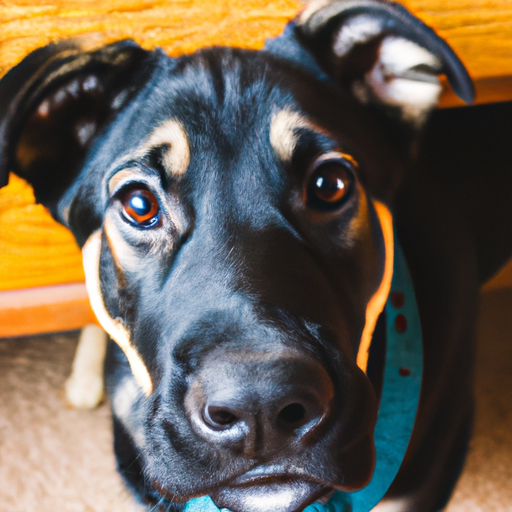Introduction

Flea infestations are a common concern for dog owners worldwide. These tiny, wingless insects can cause significant discomfort for your furry friend and lead to more severe health issues if left unchecked. While there are numerous commercial products available to combat fleas, many pet owners are turning towards natural remedies for dog fleas, seeking safer and environmentally-friendly solutions. In this article, we explore various natural methods to manage and eliminate fleas from your dog, ensuring their comfort and well-being.
Overview of Flea Infestation in Dogs
Fleas are more than just an annoyance; they can become a serious issue if not addressed promptly. These parasites feed on the blood of their hosts, causing itching, irritation, and sometimes more severe allergic reactions. Dogs with flea infestations may scratch excessively, leading to secondary skin infections and fur loss. Understanding the importance of tackling flea problems with effective solutions, including natural remedies, is essential for maintaining your dog’s health and happiness.
Importance of Natural Remedies
The use of natural remedies for dog fleas has gained popularity as pet owners become increasingly aware of the potential side effects associated with chemical treatments. Many conventional flea treatments contain harsh chemicals that can cause adverse reactions in some dogs, such as skin irritation or gastrointestinal issues. Natural alternatives offer a gentler approach, utilizing ingredients that are generally regarded as safe and less likely to cause harm. Furthermore, these remedies often have additional benefits, such as improving the dog’s coat or contributing to overall health.
Understanding Fleas
To effectively combat fleas, it’s crucial to understand their biology and behavior. Fleas are small, reddish-brown insects that thrive in warm, humid environments. They are notorious for their jumping ability, which allows them to move between hosts and spread rapidly. Once a flea has found a host, it begins to feed and reproduce, laying eggs that fall off the host and into the surrounding environment.
Lifecycle of Fleas
The flea lifecycle consists of four stages: egg, larva, pupa, and adult. The entire process can take anywhere from two weeks to several months, depending on environmental conditions. Eggs hatch into larvae, which feed on organic debris before spinning cocoons and entering the pupal stage. Adult fleas emerge from the pupae when they sense the presence of a host, ready to continue the cycle. Understanding this lifecycle is key to effectively managing flea infestations, as it highlights the importance of addressing not only the adult fleas but also the eggs and larvae.
How Fleas Affect Dogs
Fleas can have a substantial impact on a dog’s health and well-being. Besides causing itchiness and discomfort, they can lead to flea allergy dermatitis, a condition where the dog’s skin becomes hypersensitive to flea saliva. This can result in severe itching, redness, and inflammation. In heavy infestations, fleas can cause anemia due to blood loss, especially in puppies or small dogs. Additionally, fleas are vectors for tapeworms and other parasites, posing further health risks. Addressing flea infestations promptly with natural remedies can help mitigate these effects and ensure your dog remains healthy and comfortable.
Natural Flea Remedies for Dogs
There are several natural remedies available for controlling and eliminating fleas on dogs. These methods focus on using non-toxic substances that are safe for both pets and their owners, while effectively reducing flea populations.
Traps for Fleas
Flea traps are an excellent way to reduce flea numbers in your home. They work by attracting fleas and trapping them, preventing further reproduction. There are various types of flea traps, each utilizing different mechanisms to capture these pests.
Types of Traps: Soapy Water, Electric, Glue
Soapy water traps are a simple yet effective method to capture fleas. By placing a shallow dish filled with soapy water under a light source, fleas are attracted to the warmth and jump towards it, only to fall into the water and drown. Electric traps use a similar principle, but instead of water, they employ an adhesive surface that traps the fleas on contact. Glue traps are another option, operating on the same premise by using sticky surfaces to capture fleas as they attempt to jump towards a light source. These traps are a chemical-free way to reduce flea populations in your home, complementing other natural remedies for dog fleas.
Diatomaceous Earth
Diatomaceous earth is a natural powder made from the fossilized remains of tiny, aquatic organisms called diatoms. It is well-regarded for its ability to control various pests, including fleas.
How It Works
Diatomaceous earth works by dehydrating fleas. The fine particles attach to the flea’s exoskeleton, absorbing oils and moisture, ultimately leading to the flea’s death. This physical mode of action means fleas cannot build resistance to it, making it an effective component of a natural flea control strategy.
Application and Safety Tips
When using diatomaceous earth, it’s essential to choose food-grade quality to ensure safety for your pets. Sprinkle the powder lightly over areas where your dog spends time, such as bedding and carpets, and gently work it into the fibers. Allow it to sit for several hours or overnight before vacuuming thoroughly. While diatomaceous earth is generally safe, it’s advisable to wear a mask during application to avoid inhaling the fine dust. Additionally, avoid applying it directly to your dog’s skin, as it can cause dryness.
Lemon Bath
Lemon baths are another popular natural remedy for dog fleas, leveraging the natural insect-repelling properties of citrus.
Benefits of Lemon for Flea Control
Lemons contain limonene, a compound known for its ability to repel and kill fleas. A lemon bath not only helps to eliminate fleas but also leaves your dog’s coat shiny and fresh-smelling. The acidity of the lemon can also soothe irritated skin, providing relief from itching and irritation caused by flea bites.
Step-by-Step Guide to Lemon Bath
To prepare a lemon bath, start by slicing a lemon into thin pieces and boiling it in a pot of water. Allow the mixture to steep overnight for maximum potency. The following day, strain the liquid and use it to bathe your dog. Ensure the lemon water is evenly distributed over the dog’s coat, avoiding the eyes and sensitive areas. Let it sit for five to ten minutes before rinsing thoroughly with warm water. Regular lemon baths can help maintain a flea-free environment, enhancing the effectiveness of other natural remedies for dog fleas.
By incorporating these natural methods into your flea control strategy, you can effectively manage flea infestations while minimizing the exposure to potentially harmful chemicals. This holistic approach not only addresses the immediate problem but also contributes to the long-term health and happiness of your dog.
Apple Cider Vinegar
Apple cider vinegar is a popular natural remedy for dog fleas. Known for its pungent aroma and potent properties, apple cider vinegar has been a staple in holistic pet care for its ability to deter fleas and maintain a healthy coat.
Properties of Apple Cider Vinegar
Apple cider vinegar contains acetic acid, which gives it a distinct sour taste and strong smell. This acidity helps create an unfavorable environment for fleas, making it difficult for them to thrive on your dog. Additionally, apple cider vinegar can help balance the pH level of your dog’s skin, promoting overall skin health and potentially reducing issues like dry skin or dandruff.
How to Use It Safely on Dogs
When using apple cider vinegar as a natural remedy for dog fleas, it’s crucial to apply it safely. First, always dilute apple cider vinegar with water before applying it to your dog’s coat. A common ratio is one part apple cider vinegar to one part water. You can use a spray bottle to lightly mist your dog’s fur, ensuring you avoid sensitive areas like the eyes and ears. Let the solution dry naturally, and repeat this process every few days during flea season.
Essential Oils for Flea Prevention
Essential oils are another effective natural remedy for dog fleas. Not only do they repel fleas, but they also provide a pleasant aroma and can offer additional health benefits for your dog.
Types of Essential Oils: Citronella, Eucalyptus, Peppermint, Tea Tree, Rosemary
Several essential oils are particularly effective in repelling fleas. Citronella oil is well-known for its insect-repelling properties and can be a powerful tool in your flea prevention arsenal. Eucalyptus oil, with its refreshing scent, can also deter fleas while promoting respiratory health. Peppermint oil is another option, known for its cooling effect and invigorating aroma. Tea tree oil is renowned for its antiseptic properties, but it must be used with caution due to its potency. Lastly, rosemary oil is a gentle option that can enhance your dog’s coat health while keeping fleas at bay.
Application Methods and Safety Precautions
When using essential oils as a natural remedy for dog fleas, it’s essential to prioritize safety. Always dilute essential oils with a carrier oil, such as coconut or olive oil, before applying them to your dog’s skin. A general guideline is to use one drop of essential oil per tablespoon of carrier oil. Apply the mixture to areas where fleas are most likely to gather, such as behind the ears, at the base of the tail, and under the legs. Avoid your dog’s face and any open wounds. Monitor your dog for any signs of irritation or allergic reaction, and discontinue use if necessary.
Dawn Soap Bath
A Dawn soap bath can be an effective and straightforward natural remedy for dog fleas. Dawn soap is known for its grease-cutting properties, which can help eliminate fleas and their eggs from your dog’s coat.
Benefits of Using Dawn Soap
Dawn soap is gentle yet powerful, making it an ideal choice for flea control. It is effective in breaking down the exoskeleton of fleas, ultimately leading to their demise. Additionally, Dawn soap can help remove dirt, grease, and other debris from your dog’s coat, leaving it clean and fresh.
How to Properly Bathe Your Dog
To use Dawn soap as a natural remedy for dog fleas, begin by wetting your dog’s coat thoroughly with warm water. Apply a small amount of Dawn soap to your hands and gently massage it into your dog’s fur, focusing on areas where fleas are most prevalent. Be sure to work up a good lather, but avoid getting soap in your dog’s eyes, ears, or mouth. Rinse your dog thoroughly with warm water to remove all soap residue, and dry them with a clean towel. This process can be repeated once a week during peak flea season.
General Home Remedies for Flea Control
In addition to specific treatments, incorporating general home remedies into your flea control routine can make a significant difference. Regular cleaning and maintenance help create an environment that is less hospitable to fleas.
Vacuuming and Cleaning
Vacuuming is a crucial step in natural flea control. Fleas and their eggs can hide in carpets, upholstery, and pet bedding, making it essential to regularly clean these areas.
Importance of Regular Vacuuming
Consistent vacuuming helps remove fleas and their eggs from your home, reducing the likelihood of re-infestation. Aim to vacuum at least once a week, paying special attention to areas where your dog spends the most time. Dispose of the vacuum bag or canister contents immediately to prevent fleas from escaping back into your home. Additionally, washing your dog’s bedding and toys in hot water can help eliminate any remaining fleas or eggs.
Flea Combing
Flea combing is a simple yet effective natural remedy for dog fleas. This method allows you to manually remove fleas from your dog’s coat, providing immediate relief and reducing the overall flea population.
How to Effectively Use a Flea Comb
Begin by choosing a flea comb with fine, closely spaced teeth designed to catch fleas and their eggs. Gently comb through your dog’s fur, starting at the head and working your way down to the tail. Pay special attention to areas where fleas are likely to gather, such as around the neck, under the legs, and at the base of the tail. After each pass, inspect the comb for fleas and dip it into a bowl of soapy water to kill any fleas you collect. Repeat this process several times a week to keep fleas under control.
By integrating these natural remedies for dog fleas into your regular pet care routine, you can effectively manage and prevent flea infestations while promoting your dog’s overall well-being.
Washing Bedding
When dealing with a flea infestation, one of the most effective natural remedies for dog fleas is maintaining cleanliness in your pet’s environment. Washing your dog’s bedding is a crucial step in breaking the life cycle of fleas, as these pests often lay eggs in cozy areas where pets frequently rest.
Best Practices for Washing Pet Bedding
To ensure that you are effectively removing fleas and their eggs from your dog’s bedding, follow these best practices:
1.
Frequency
: Wash your dog’s bedding at least once a week. This helps to remove any fleas, eggs, and larvae that may have settled into the fabric.
2.
Water Temperature
: Use hot water to wash the bedding, as high temperatures can kill fleas at all stages of their lifecycle. Ensure that the fabric of the bedding can withstand hot water to avoid damage.
3.
Natural Detergents
: Choose a pet-safe, natural detergent. Many conventional detergents contain harsh chemicals that could irritate your dog’s skin. Look for products that are labeled as hypoallergenic and free from artificial fragrances.
4.
Drying
: Dry the bedding on the highest heat setting that the fabric can tolerate. The heat from the dryer will help to kill any remaining fleas or eggs.
5.
Additives
: Consider adding natural flea-repellent agents, such as a few drops of essential oils like lavender or eucalyptus, to the wash. However, ensure these oils are safely diluted and non-toxic to dogs.
By adhering to these practices, you can significantly reduce the flea population in your home and provide your dog with a more comfortable living space.
Lawn Care
Your yard is another area where fleas can thrive and pose a risk to your dog. A well-maintained yard is a natural remedy for dog fleas, reducing the likelihood of fleas hitching a ride indoors on your pet.
Maintaining a Flea-Free Yard
To keep your yard free from fleas, incorporate the following strategies:
1.
Regular Mowing
: Keep your grass short by mowing regularly. Fleas thrive in long grass, where they can easily hide and lay eggs. Short grass allows more sunlight to penetrate, which can help deter fleas.
2.
Remove Debris
: Clear away any leaf piles, brush, and other debris that could serve as hiding spots for fleas. These areas provide shade and moisture, ideal conditions for fleas to breed.
3.
Beneficial Nematodes
: Introduce beneficial nematodes to your yard. These microscopic organisms naturally prey on fleas and other garden pests, creating a hostile environment for fleas to survive.
4.
Diatomaceous Earth
: Sprinkle food-grade diatomaceous earth in areas where your dog frequently plays. This natural powder dehydrates and kills fleas without harming your pet.
5.
Cedar Chips
: Use cedar chips in your garden beds or around the perimeter of your yard. Cedar is a natural flea deterrent, and its scent helps keep these pests at bay.
Implementing these methods as part of your lawn care routine can effectively reduce the presence of fleas and provide a safer outdoor environment for your dog.
Keeping Pets Indoors
While spending time outdoors is beneficial for dogs, keeping them indoors during peak flea season can be an effective natural remedy for dog fleas. Limiting outdoor exposure reduces the chances of your pet coming into contact with these pests.
Benefits and Considerations
1.
Reduced Exposure
: By keeping your dog indoors, you minimize their exposure to flea-infested areas, significantly decreasing the likelihood of an infestation.
2.
Controlled Environment
: Indoors, you have more control over your dog’s environment. You can take proactive measures to keep your home clean and free from fleas, which is more challenging outdoors.
3.
Mental Stimulation
: To ensure your dog remains happy and healthy indoors, provide plenty of mental and physical stimulation. Use interactive toys, puzzle feeders, and regular playtime to keep your pet engaged.
4.
Balanced Approach
: While keeping pets indoors can reduce flea exposure, it’s important to balance this with their need for exercise and socialization. Consider indoor activities or controlled outdoor time in flea-free areas.
By thoughtfully managing your dog’s indoor and outdoor time, you can leverage this natural remedy for dog fleas while ensuring your pet remains active and content.
Safety and Precautions
While natural remedies for dog fleas offer a safer alternative to chemical treatments, it’s essential to approach these methods with care. Understanding potential risks and monitoring your dog’s reaction is crucial to ensuring their well-being.
Potential Risks of Natural Remedies
1.
Allergic Reactions
: Some natural remedies, such as essential oils, can cause allergic reactions in dogs. Always perform a patch test and consult your veterinarian before using new products.
2.
Ingestion Hazards
: Dogs may accidentally ingest substances used in natural remedies. Ensure that all materials, especially those applied to the skin or fur, are non-toxic and safe for pets.
3.
Effectiveness
: Not all natural remedies work for every dog or every flea infestation. Be prepared to try multiple solutions and adjust your approach based on what is effective for your specific situation.
How to Monitor Your Dog’s Reaction
1.
Observe Behavior
: Watch for changes in your dog’s behavior, such as increased scratching or discomfort, which may indicate an adverse reaction to a natural remedy.
2.
Check Skin Condition
: Regularly inspect your dog’s skin for signs of irritation, redness, or rashes. If you notice any adverse effects, discontinue use and consult your veterinarian.
3.
Document Changes
: Keep a log of the remedies you try and their effects. This can help you identify patterns and determine which solutions work best for your dog.
By taking these precautions, you can use natural remedies for dog fleas safely and effectively, ensuring your pet’s comfort and health.
Quick Takeaways:
When it comes to dealing with dog fleas, many pet owners are turning to natural remedies for a safer and more eco-friendly approach. These methods are particularly appealing because they minimize the risk of exposing your pet to harsh chemicals found in conventional flea treatments. Natural flea remedies for dogs include a variety of options, each with its unique benefits and application methods.
One popular solution is using essential oils for dog fleas, such as lavender, eucalyptus, or peppermint. These oils can be diluted and applied to your dog’s coat or used in a homemade flea spray for dogs. Essential oils not only help repel fleas but also leave your pet smelling fresh.
Apple cider vinegar flea treatment for dogs is another effective home remedy. By mixing equal parts of water and apple cider vinegar, you create a natural spray that can be applied to your dog’s coat. This mixture helps balance the pH levels on your dog’s skin, making it less attractive to fleas.
Diatomaceous earth is another natural option, working as a non-toxic flea control for dogs. This fine powder can be sprinkled on your dog’s coat and in areas where fleas may breed. It works by dehydrating and killing fleas without harming your pet.
Lemon juice for fleas on dogs is a simple and effective method. Fleas dislike the smell and acidity of lemon, which makes it an excellent natural deterrent. A rinse made from lemon juice and water can be applied to your dog’s coat for added protection.
Regular flea combing techniques for dogs are essential in any flea prevention strategy. A fine-toothed flea comb helps remove fleas and their eggs from your dog’s fur, reducing the chance of a full-blown infestation.
FAQs:
1.
What are the most effective natural remedies for dog fleas?
When considering natural remedies for dog fleas, essential oils, apple cider vinegar, and diatomaceous earth are among the most effective. Essential oils such as lavender and peppermint can be diluted and applied to your dog’s coat to repel fleas. Apple cider vinegar, when mixed with water, creates a spray that balances your dog’s skin pH, while diatomaceous earth acts as a desiccant to kill fleas by drying them out.
2.
How can I use lemon juice for fleas on dogs?
Lemon juice is a simple and natural way to deter fleas. To use it, boil a sliced lemon in water, let it steep overnight, and then strain the liquid. You can apply this lemon rinse to your dog’s coat, avoiding the eyes, to naturally repel fleas. The acidity and citrus scent are not favored by fleas, making it an effective deterrent.
3.
Is diatomaceous earth safe for dogs, and how does it work as a flea treatment?
Yes, food-grade diatomaceous earth is safe for dogs and acts as a natural flea treatment. It works by dehydrating the exoskeleton of fleas, ultimately killing them. To use it, gently dust your dog’s coat with the powder, focusing on areas where fleas are known to hide, such as the neck, underbelly, and tail base. Be sure to avoid your dog’s eyes and nose, and always use food-grade diatomaceous earth.
4.
Can essential oils be used as a DIY flea treatment for dogs?
Essential oils can be a powerful component of a DIY flea treatment for dogs. Oils like lavender, eucalyptus, and cedarwood have natural flea-repelling properties. Mix a few drops of your chosen essential oil with a carrier oil, such as coconut or olive oil, and apply it sparingly to your dog’s fur. Alternatively, you can add these oils to a spray bottle with water to create a homemade flea spray for dogs.
5.
What are some tips for preventing fleas in dogs naturally?
To prevent fleas in dogs naturally, start with regular grooming and flea combing techniques. This helps catch any fleas early before they multiply. Use natural deterrents like apple cider vinegar sprays or essential oil treatments. Keep your home clean by vacuuming regularly and washing your dog’s bedding to remove any flea eggs. Lastly, consider using diatomaceous earth in your yard and home to further control flea populations.
Conclusion:
Natural remedies for dog fleas offer a safe and effective alternative to chemical treatments, providing peace of mind for pet owners concerned about their pet’s health and the environment. From essential oils to diatomaceous earth, these organic flea control methods can be customized to suit your dog’s needs and your lifestyle. Regular grooming, combined with these natural solutions, can significantly reduce the risk of flea infestations.
Incorporating these home remedies for fleas on dogs requires consistency and patience, but the rewards are well worth the effort. By choosing natural flea prevention methods, you contribute to a healthier environment for your pet and family. As with any treatment, it’s important to monitor your pet for any adverse reactions and consult your veterinarian if you have concerns.
Ultimately, the best natural flea prevention for dogs is a comprehensive approach that includes diet, hygiene, and a proactive strategy using non-toxic flea control measures. By staying informed and vigilant, you can keep your pet happy, healthy, and flea-free naturally.
References:
1. https://www.akcpetinsurance.com/blog/natural-flea-and-tick-prevention
2. https://www.ellevetsciences.com/blog/home-remedies-for-fleas-on-dog/
3. https://www.petmd.com/general-health/natural-flea-repellent-your-pets-and-home
4. https://nativepet.com/blogs/health/home-remedies-for-fleas-on-dogs
5. https://wearethecure.org/natural-flea-treatments-for-dogs/
Our solution eradicates fleas on contact without harmful chemicals, ensuring a safe environment for your pets and family. Easy to use and highly effective, SayByeBugs helps you maintain a flea-free home. Learn more and order today at SayByeBugs.com


